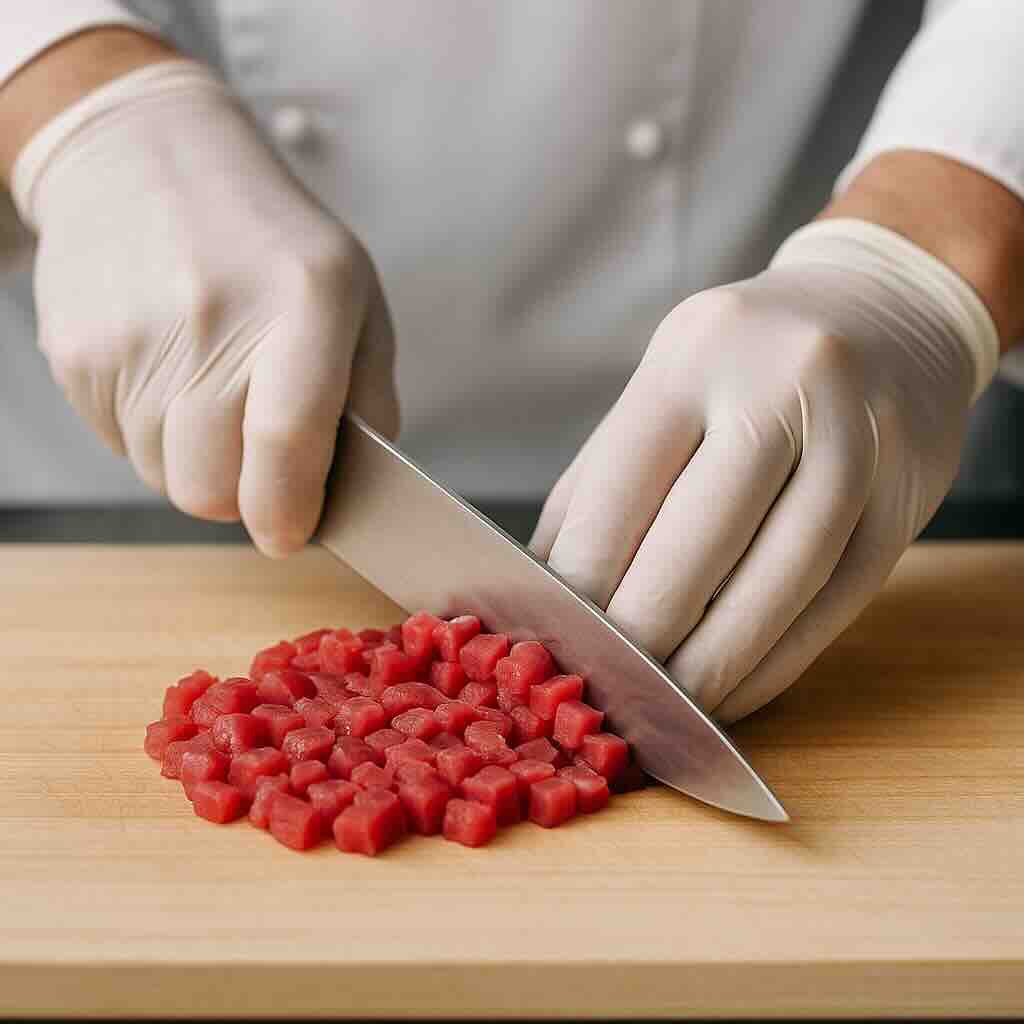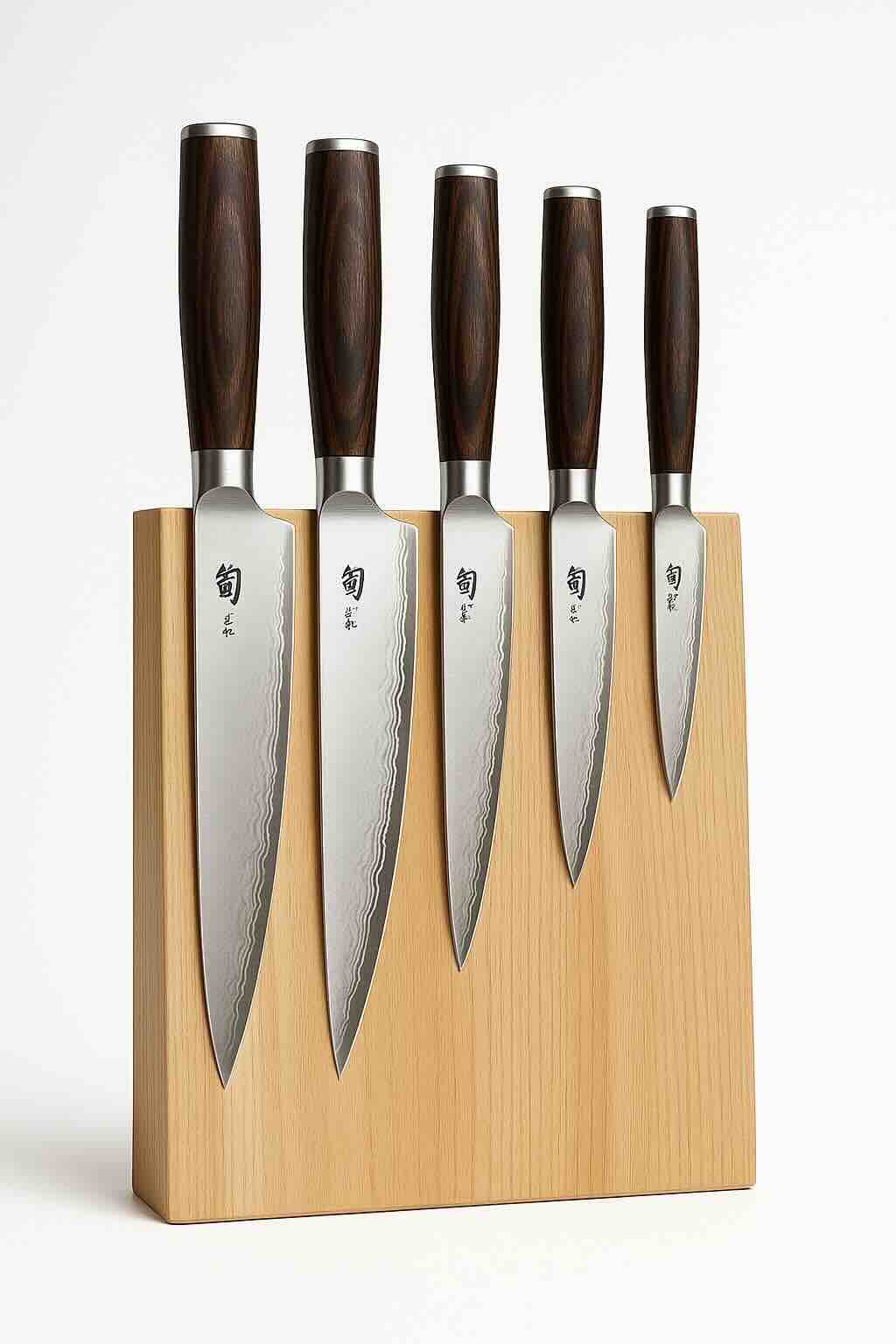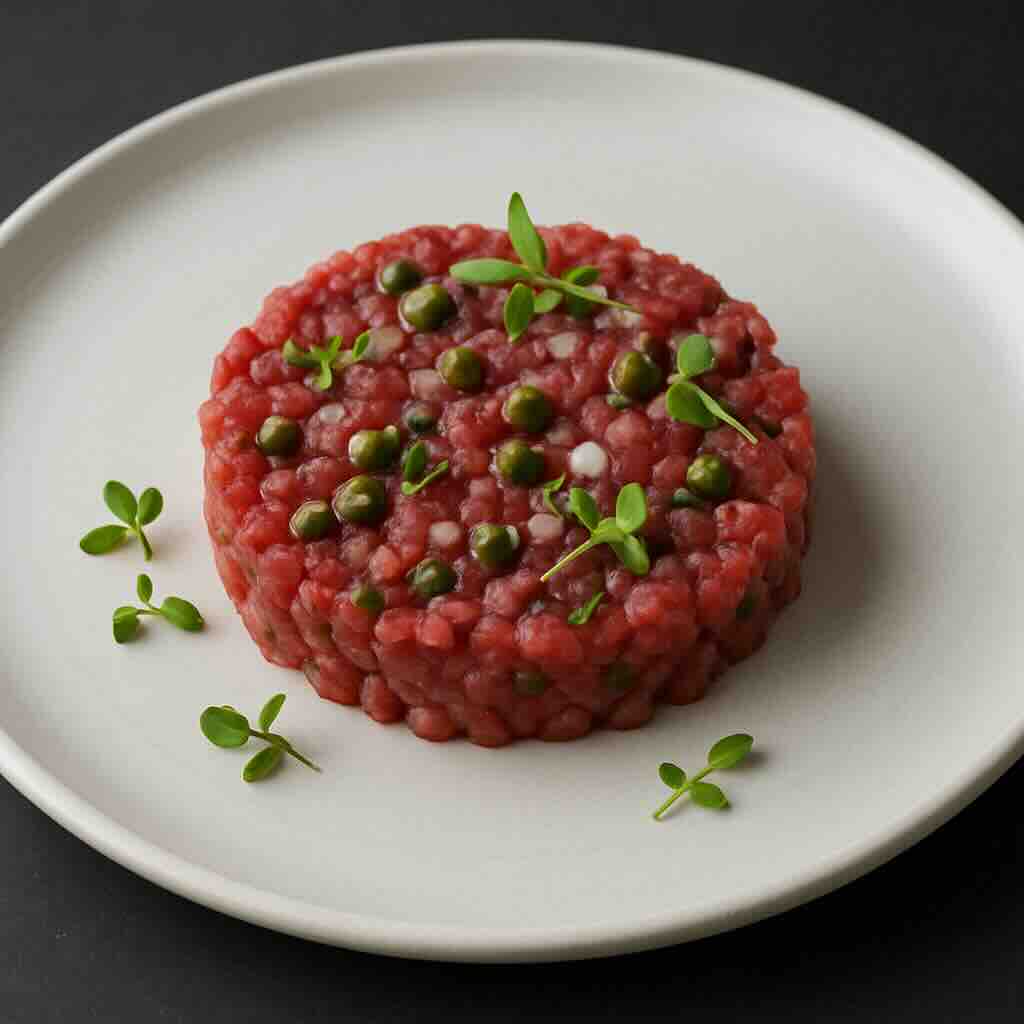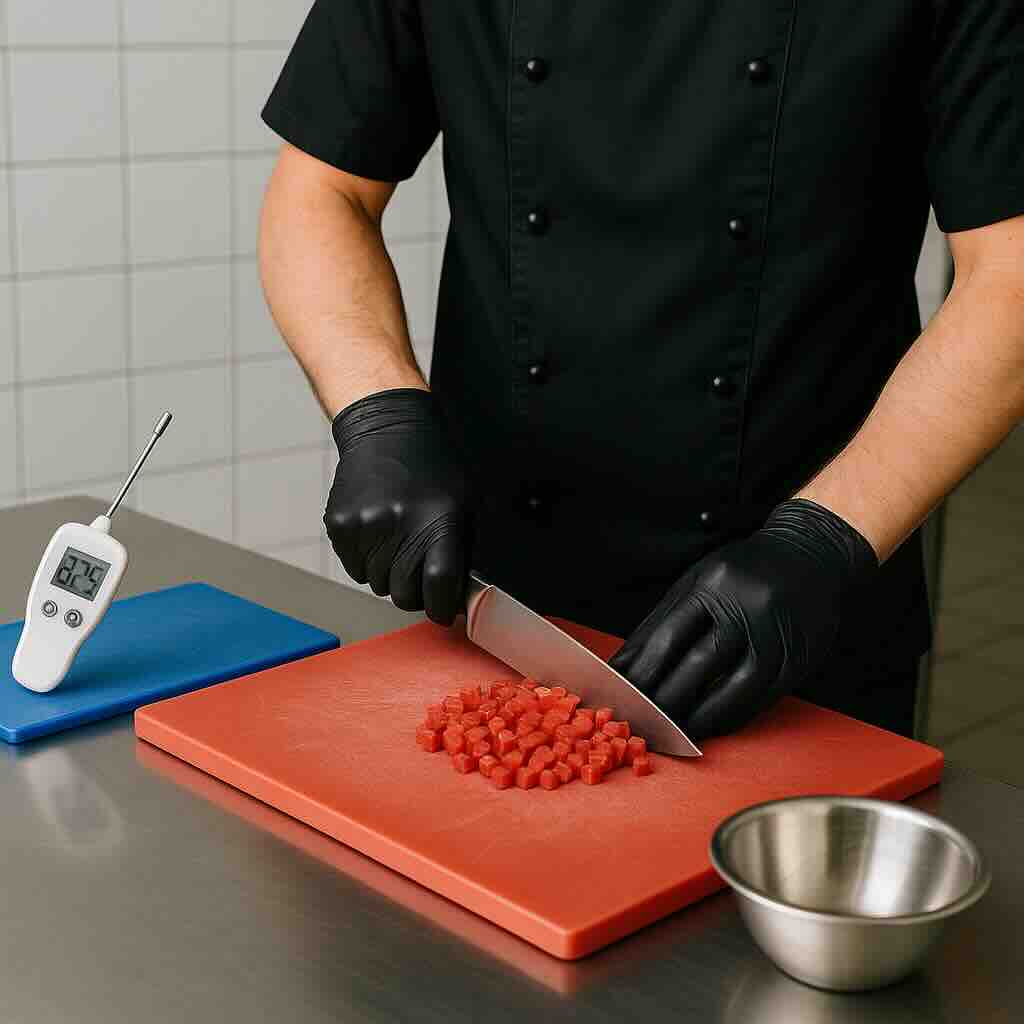Knife Skills for Perfect Tartare

Mastering knife skills is fundamental to creating exceptional tartare. The precision of your cuts directly impacts texture, presentation, and the overall eating experience. This comprehensive guide will teach you professional techniques for achieving perfect consistency in your raw preparations.
Essential Knives for Tartare
Different proteins and preparations require specific knife types for optimal results:
| Knife Type | Best For | Blade Length | Key Features |
|---|---|---|---|
| Chef's Knife | Beef, venison, general prep | 8-10 inches | Versatile, good balance |
| Yanagiba (Sashimi) | Fish, delicate seafood | 10-12 inches | Single bevel, razor sharp |
| Santoku | Vegetables, smaller cuts | 6-7 inches | Flat blade, precise control |
| Fillet Knife | Fish preparation | 6-8 inches | Flexible, curved blade |
Fundamental Cutting Techniques
The Brunoise Cut
The classic fine dice for tartare, creating uniform 1/8-inch cubes:
Julienne First
Cut protein into thin strips, maintaining even thickness
Stack Strips
Align julienned strips parallel to each other
Cross Cut
Slice perpendicular to create uniform cubes
Check Size
Ensure all pieces are consistent 1/8-inch cubes
The Standard Dice
Slightly larger 1/4-inch cubes for heartier textures:
- Square off the protein by trimming uneven edges
- Create 1/4-inch thick planks
- Cut planks into 1/4-inch strips
- Cross-cut strips into perfect cubes
Knife Maintenance Essentials
Daily Maintenance
- Honing: Use steel or ceramic rod before each use
- Cleaning: Hand wash immediately after use
- Drying: Pat completely dry to prevent corrosion
- Storage: Use knife block or magnetic strip
Sharpening Schedule
- Professional use: Weekly sharpening
- Home use: Monthly or bi-monthly
- Method: Whetstone (1000-3000 grit) or professional service
- Angle: 15-20 degrees per side for most knives
⚠️ Safety First
Always cut away from your body. Use proper hand positioning with fingertips curled under, knuckles forward. Maintain a clean, stable cutting surface.
Cutting Board Selection
The right cutting board enhances safety and protects your knives:
Material Comparison
- Wood: Knife-friendly, naturally antibacterial, requires maintenance
- Plastic: Dishwasher safe, affordable, can harbor bacteria in cuts
- Bamboo: Eco-friendly, harder than wood, can dull knives faster
- Glass/Stone: Easy to clean but extremely hard on knife edges
Temperature Control While Cutting
Maintaining proper temperature is crucial for both safety and ease of cutting:
Preparation Steps
- Chill protein in freezer for 20-30 minutes before cutting
- Use a chilled cutting board (place in freezer beforehand)
- Work in small batches, returning unused portions to refrigeration
- Complete cutting within 15-20 minutes at room temperature
Specific Techniques by Protein
Beef and Game Meats
- Remove all fat and sinew completely
- Cut against the grain for tenderness
- Use firm, confident strokes
- Aim for 1/4-inch dice for classic preparations
Fish and Seafood
- Remove skin and pin bones meticulously
- Use single, clean cuts to avoid bruising
- For salmon: cut with the grain for firmer texture
- For scallops: remove side muscle, cut into smaller pieces
Vegetables
- Use different knife angles for different textures
- Cut harder vegetables slightly smaller
- Treat herbs gently to prevent bruising
- Consider varying sizes for visual interest
Troubleshooting Common Issues
Uneven Cuts
- Cause: Inconsistent hand pressure or dull knife
- Solution: Sharpen knife, practice consistent motion
Mushy Texture
- Cause: Protein too warm or overworked
- Solution: Keep colder, use sharper knife, work faster
Difficulty Cutting
- Cause: Dull blade or improper technique
- Solution: Sharpen knife, check cutting angle
Advanced Techniques
The Chiffonade
Perfect for herbs and delicate garnishes:
- Stack leaves with largest on bottom
- Roll tightly from stem to tip
- Slice perpendicular to roll in thin ribbons
- Gently separate ribbons with fingertips
The Bias Cut
Creates elegant oval pieces with more surface area:
- Hold knife at 45-degree angle to protein
- Make clean, decisive cuts
- Maintain consistent angle throughout
- Perfect for elongated presentations

Complete Set: Professional Knife Collection
Everything you need for expert tartare preparation: chef's knife, yanagiba, and essential accessories.
View on AmazonBuilding Muscle Memory
Developing consistent knife skills requires regular practice:
Practice Exercises
- Onion Dice: Practice brunoise cuts on onions daily
- Carrot Julienne: Work on uniform strips
- Herb Chiffonade: Perfect delicate cutting techniques
- Protein Practice: Use less expensive cuts for skill building
Professional Tips
- Start slowly and focus on accuracy over speed
- Maintain proper posture and hand position
- Use your knuckles as a guide for consistent cuts
- Practice the same cuts repeatedly until automatic
Conclusion
Mastering knife skills is a journey that transforms your tartare from good to exceptional. The precision and consistency you develop will not only improve your raw preparations but enhance all your culinary endeavors. Remember that sharp knives, proper technique, and regular practice are the keys to success.
Start with basic cuts and gradually progress to more advanced techniques. With dedication and practice, you'll develop the muscle memory and confidence to create restaurant-quality tartare at home.


